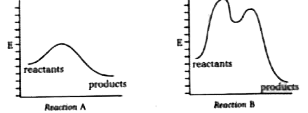Which statement is not true?
pHof1×10−8MHCl is 8
96500 coulomb deposits 1 g equivalent of copper
Conjugate base of H2PO−4 is HPO2−4
pH + pOH = 14 for all aqueous solution
The correct Answer is:A
To determine which statement is not true, we will analyze each statement one by one.
Step 1: Analyze Statement 1
Statement: The pH of 1 × 10⁻⁸ molar HCl is 8.
- Explanation:
- HCl is a strong acid and dissociates completely in solution.
- The concentration of H⁺ ions from the HCl is 1 × 10⁻⁸ M.
- However, in very dilute solutions, we must also consider the contribution of H⁺ ions from water, which is 1 × 10⁻⁷ M.
- Therefore, the total concentration of H⁺ ions in the solution is:
(H+)=1×10−8+1×10−7=1.1×10−7 M
- Now, we calculate the pH:
pH=−log(1.1×10−7)≈6.96
- Since the pH is approximately 6.96, the statement claiming the pH is 8 is not true.
Step 2: Analyze Statement 2
Statement: 96500 coulombs deposit 1 gram equivalent of copper.
- Explanation:
- According to Faraday's laws of electrolysis, 1 Faraday (96500 coulombs) will deposit 1 gram equivalent of a substance.
- For copper, which has a valency of 2, 1 gram equivalent corresponds to 63.5 grams of copper.
- Therefore, this statement is true.
Step 3: Analyze Statement 3
Statement: The conjugate base of H₂PO₄⁻ is HPO₄²⁻.
- Explanation:
- The conjugate base is formed by removing one H⁺ ion from the acid.
- Starting with H₂PO₄⁻, if we remove one H⁺, we get HPO₄²⁻.
- Thus, this statement is true.
Step 4: Analyze Statement 4
Statement: pH + pOH = 14 for all aqueous solutions.
- Explanation:
- The relationship pH + pOH = 14 holds true at 25°C for pure water and dilute aqueous solutions.
- This is derived from the ion product of water (K_w) at 25°C, where K_w = 1 × 10⁻¹⁴.
- Therefore, this statement is true.
Conclusion:
The statement that is not true is Statement 1: "The pH of 1 × 10⁻⁸ molar HCl is 8."
---
Statement: The pH of 1 × 10⁻⁸ molar HCl is 8.
- HCl is a strong acid and dissociates completely in solution.
- The concentration of H⁺ ions from the HCl is 1 × 10⁻⁸ M.
- However, in very dilute solutions, we must also consider the contribution of H⁺ ions from water, which is 1 × 10⁻⁷ M.
- Therefore, the total concentration of H⁺ ions in the solution is:
(H+)=1×10−8+1×10−7=1.1×10−7 M
- Now, we calculate the pH:
pH=−log(1.1×10−7)≈6.96
- Since the pH is approximately 6.96, the statement claiming the pH is 8 is not true.
Statement: 96500 coulombs deposit 1 gram equivalent of copper.
- According to Faraday's laws of electrolysis, 1 Faraday (96500 coulombs) will deposit 1 gram equivalent of a substance.
- For copper, which has a valency of 2, 1 gram equivalent corresponds to 63.5 grams of copper.
- Therefore, this statement is true.
Statement: The conjugate base of H₂PO₄⁻ is HPO₄²⁻.
- The conjugate base is formed by removing one H⁺ ion from the acid.
- Starting with H₂PO₄⁻, if we remove one H⁺, we get HPO₄²⁻.
- Thus, this statement is true.
Statement: pH + pOH = 14 for all aqueous solutions.
- The relationship pH + pOH = 14 holds true at 25°C for pure water and dilute aqueous solutions.
- This is derived from the ion product of water (K_w) at 25°C, where K_w = 1 × 10⁻¹⁴.
- Therefore, this statement is true.
The statement that is not true is Statement 1: "The pH of 1 × 10⁻⁸ molar HCl is 8."
Topper's Solved these Questions
- IONIC EQUILIBRIUMBOOK - VMC MODULES ENGLISHCHAPTER - IONIC EQUILIBRIUMEXERCISE - JEE ADVANCED( ARCHIVE )
65 Videos
- IONIC EQUILIBRIUMBOOK - VMC MODULES ENGLISHCHAPTER - IONIC EQUILIBRIUMEXERCISE - Illustration - 1
1 Videos
- IONIC EQUILIBRIUMBOOK - VMC MODULES ENGLISHCHAPTER - IONIC EQUILIBRIUMEXERCISE - LEVEL 2 NUMERICAL VALUE TYPE
15 Videos
- INTRODUCTION TO ORGANIC CHEMISTRY BOOK - VMC MODULES ENGLISHCHAPTER - INTRODUCTION TO ORGANIC CHEMISTRY EXERCISE - JEE ADVANCED ARCHIVE
81 Videos
- JEE MAIN - 5BOOK - VMC MODULES ENGLISHCHAPTER - JEE MAIN - 5EXERCISE - PART II : CHEMISTRY (SECTION - 2)
5 Videos
Similar Questions
Knowledge Check
For the following two reactions, which statement is true ?
 AReaction A is faster and less exergonic than BBReaction B is faster and more exergonic than ACReaction A is faster and less endergonic than BDReaction B is faster and more endergonic than A
AReaction A is faster and less exergonic than BBReaction B is faster and more exergonic than ACReaction A is faster and less endergonic than BDReaction B is faster and more endergonic than AWhich of the following statement is not true?
AAll identity matrices are square matrixBAll null matrices are square matrixCFor a square matrix number of rows is equal to the number of columnsDA square matrix all of whose elements except those in the leading diagonal are zero is the diagonal matrixWhich of the following statement is not true?
AAll identity matrices are square matrixBAll null matrices are square matrixCFor a square matrix number of rows is equal to the number of columnsDA square matrix all of whose elements except those in the leading diagonal are zero is the diagonal matrix
